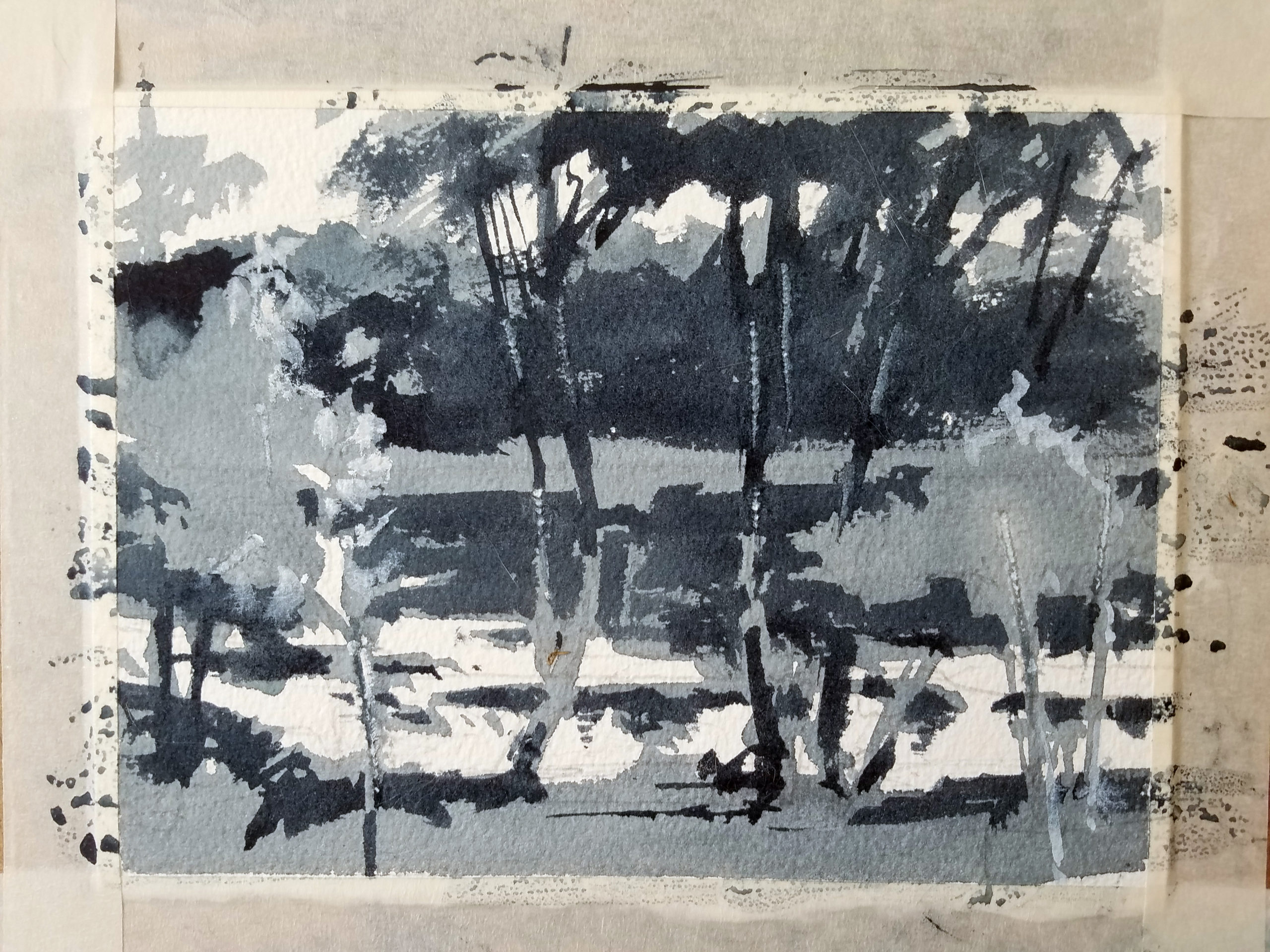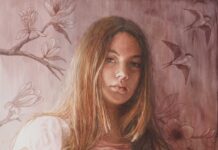By Kelly Kane

“As artists, we are attracted to lighting, or something unique about a scene,” says Dan Mondloch. “It’s often something intangible. When we capture that intangible element and it comes through in the painting, it works. When we don’t get in the way of that flow, it doesn’t matter what style or medium — the piece succeeds. I think collectors are savvy and can pick up on that, even when it’s a challenge to put it into words.”
Of his own work, Mondloch says watercolor is better for him if there is a time constraint. “I can crank out an accurate drawing pretty fast on watercolor paper and suggest warm and cool areas with washes. It’s especially good for grittier scenes with lots of stuff in them, like wires, garbage cans, and the like. I can simplify the scenes into light and shade, and unify them with washes to strip out some of the identity of all the clutter in nice light. That transformation makes a familiar subject beautiful, which can be most satisfying.”
Whatever the outcome, the artist accepts a plein air piece as documentation of a specific experience. “I don’t really care to touch it up back in the study,” he says. “There is an authenticity to it. It ties into my life because that is the time constraint that I was working with. And that’s what it is.”
WATERCOLOR IN ACTION

Step 1
Mondloch says the ideal way for him to start a painting is to first paint a value study using Payne’s gray. “It tells me what I need to do in the color part of the painting, and which objects will fall into which value categories,” he says. “It’s a dress rehearsal or warmup for the actual painting. I have to solve those problems first.”

Step 2
Next comes a light value wash using a jumbo sable round brush that sets up the middle values in the watercolor painting. If any whites need to be preserved, the artist takes care to paint around those areas. Sky and water areas may get very little additional paint henceforth, so he takes care to get the value right. “I want to make it as pure and not overworked as possible,” he says. Color temperature is foremost in his mind, after value, in this stage.

Step 3
Mondloch embraces the nature of watercolor fully in this stage, letting the paint blossom and flow, keeping the painting loose. “The different colors may blend on the sheet, but the objects will still read the way I want them to,” he says. As specific elements such as the tree trunks are indicated, the pencil lines of the quick drawing on the paper become less noticeable.

Final Step
At this stage, the artist paints in dark values, and adds calligraphic marks to indicate twigs and other details. “This is often the stage where the painting really comes together and makes sense visually,” Mondloch says. “You only need one or two sharply rendered things for the rest to remain merely indicated.”








